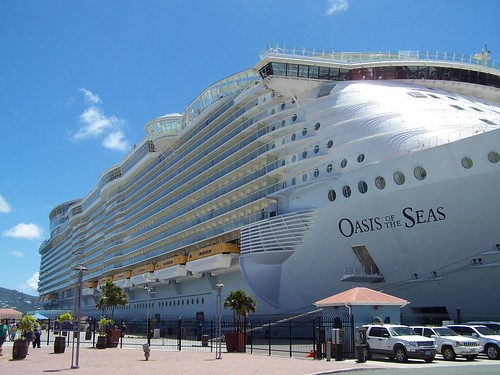Posts tagged economies of scale
Growth and Economies of Scale Quizzes
Jun 21st
To help check your understanding of this topic, some interactive quizzes with instant feedback:
Integration-Takeover and Mergers – Multiple Choice Quiz
BBC Bitesize quiz – Economies of Scale
Dinesh Bakshi Word fill activity
A Proprofs quiz – possibly created by a student?
With the last link in mind, your next task could be to design some multiple choice questions of your own for this topic.
Economies of Scale
May 24th
Image: Some rights reserved by Cory M. Grenier
Starter
What cost advantages are there for big firms? Watch the video clip below.
On board world’s biggest cruise ship Oasis of the Seas
Image: Some rights reserved by Paul Dickerson
Resources
There are five main types of Economies of Scale for you to consider. The resources give a little bit of information about each one.
1) Purchasing Economies
2) Financial Economies
3) Managerial Economies
Study this business structure and consider how it is more efficient than a company which is a sole trader
4) Technical Economies
5) Marketing Economies
General resource for cross-referencing
Demonstrating Your Understanding
Level 3 Activity – Quite tricky – makes you think. Complete the first two tasks at the end of this page, but use the 5 economies of scale above. The scores in brackets are not the same as IGCSE scores, so you can ignore them. As you do so, be sure to explain what each type of economies of scale means Extra Task – include Risk Bearing Economies.
Level 2 Activity – Medium Difficulty – Think of some of the ways in which IKEA uses the five Economies of Scale listed above. even if you can’t give specifics, give examples that you think would apply to IKEA (or another large retail firm). This pdf file referring to IKEA in Bangkok, Thailand, might give you some ideas. As you do so, be sure to explain what each type of economies of scale means. Extra Task – include Risk Bearing Economies.
Level 1 Activity – Accessible and Useful. Extra Task – research and comment on Risk Bearing Economies. Having done this you should be able to answer a question like this ‘Explain what is meant by economies of scale’ (6)

The Long-Run: Cost Curves, Economies and Diseconomies
Jan 17th
www.bized.co.uk provides some useful materials for this topic. The starting point is their mind map. Click below to view the mindmap on its original site and in full.
A very useful MS powerpoint file, also courtesy of www.bized.co.uk, to expand on teh above mindmap can be accessed here:
pajholden gives an overview in 8 minutes:
Check your understanding of the different economies of scale using this simple interactive test from www.dineshbakshi.com (click on it):
Once you have learned about the different Economies of Scale, attempt to create a detailed revision diagram by clicking here:
A very detailed analysis by richardmckenzie of how the long run cost curve can be built up of multiple short run cost curves. He also includes the long run marginal cost curve:
This video (with very quiet audio – you will need to turn the volume up) explains the overall shape of the LRAC (Long Run Average Cost) curve with labels but it is simpler as it does not include the SRAC curves.
Now, could you identify economies of scale on a diagram? Pause this video at the start and see fi you can answer it before the commentator gives the answer:








